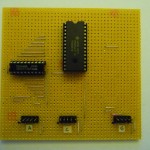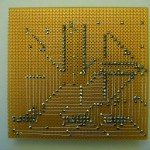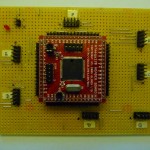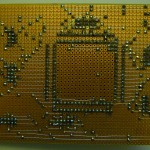
Recently I have been working on my oscilloscope project. Documenting ideas, digging out requirements and restructuring the whole projects documentation wiki. While doing so I realized that the page was totally confusing to new visitors since it does not say that there is no finished scope yet (even though there is a picture of one). What one can see on the pictures is actually a prototype. Until now we did not explicitly say so. This is NOT the final thing.
To address that issue we added a Status section to the start page of the wiki that clarifies the projects state.
Now the interesting part: We created a new page for the prototype which is linked on the wikis start page and moved existing files related to the components of the prototype from /trunk to /branches/prototype-a.
Next step will be to take the legacy firmware we have and adjusted it to make it run on the prototype hardware. When the firmware is ported (basically adjust pin mappings, enable/disable functionality) we will use is as the starting point to get the code incrementally refactored until we replaced everything with test-driven code.




